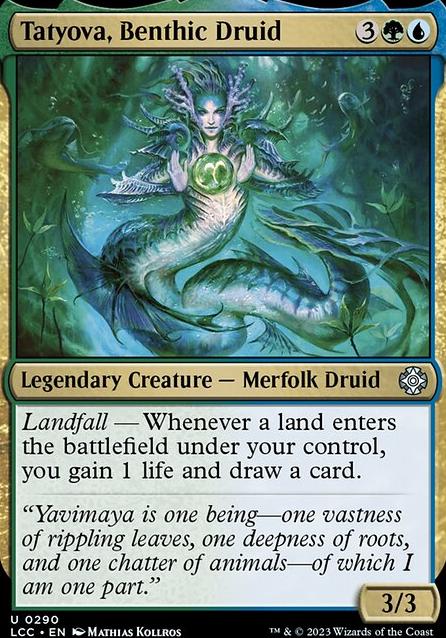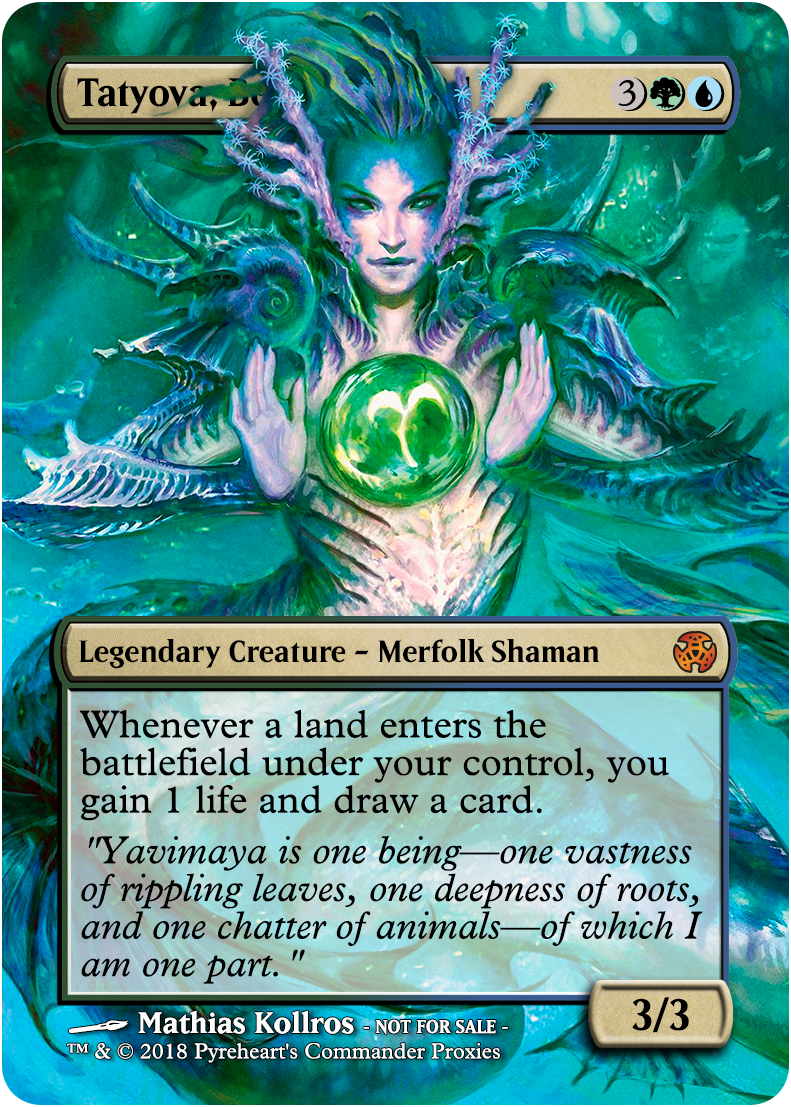
~cPDH~ Tatyova Combo/Control (primer)
Pauper EDH* Competitive GU (Simic) Lands Pauper Ramp Value Engine
Counter Magic (13)
-
1x
Dispel

- 1x Intervene
-
1x
Vines of Vastwood

- 1x Counterspell
-
1x
Daze

-
1x
Deprive

- 1x Logic Knot
- 1x Memory Lapse
- 1x Miscalculation
- 1x Negate
- 1x Disruptive Pitmage
-
1x
Dissolve

-
1x
Foil

Protection (9)
-
1x
Nature's Claim

-
1x
Echoing Truth

-
1x
Lignify

- 1x Lull
- 1x Neurok Stealthsuit
- 1x Snap
-
1x
Capsize

- 1x Deep Freeze
- 1x Fade Away
Redundancy (5)
Value (2)
Card Draw (10)
- 1x Brainstorm
-
1x
Gitaxian Probe

-
1x
Ponder

-
1x
Preordain

- 1x Sleight of Hand
- 1x Whispers of the Muse
- 1x Impulse
- 1x Tragic Lesson
-
1x
Gush

-
1x
Treasure Cruise

Ramp/Land Tutors (10)
- 1x Crop Rotation
-
1x
Expedition Map

-
1x
Dreamscape Artist

-
1x
Thought Vessel

-
1x
Cultivate

- 1x Harrow
-
1x
Search for Tomorrow

- 1x Spoils of Victory
- 1x Reap and Sow
- 1x Shoreline Ranger
Land (30)
Instant Land (4)
Commander (1)
Infinite Combo (9)
- 1x Tidal Bore
- 1x Compulsive Research
- 1x Displace
- 1x Ghostly Flicker
-
1x
Archaeomancer

- 1x Deep Analysis
-
1x
Mnemonic Wall

-
1x
Peregrine Drake

- 1x Salvager of Secrets
Utility Lands (7)
Sideboard
Other (7)
Maybeboard
Other (3)
Suggestions
Updates Add
Comments
Attention! Complete Comment Tutorial! This annoying message will go away once you do!
Important! Formatting tips — Comment Tutorial — markdown syntax
Please login to comment
94% Casual
Competitive
| Date added | 3 years |
| Last updated | 2 years |
| Legality | This deck is Pauper EDH legal. |
| Cards | 100 |
| Avg. CMC | 2.51 |
| Tokens | Morph 2/2 C, Plant 0/1 G |
| Folders | Pauper EDH Decks, Pauper EDH |
| Votes | |
| Ignored suggestions | |
| Shared with | |
| Based on | |
| Views |



